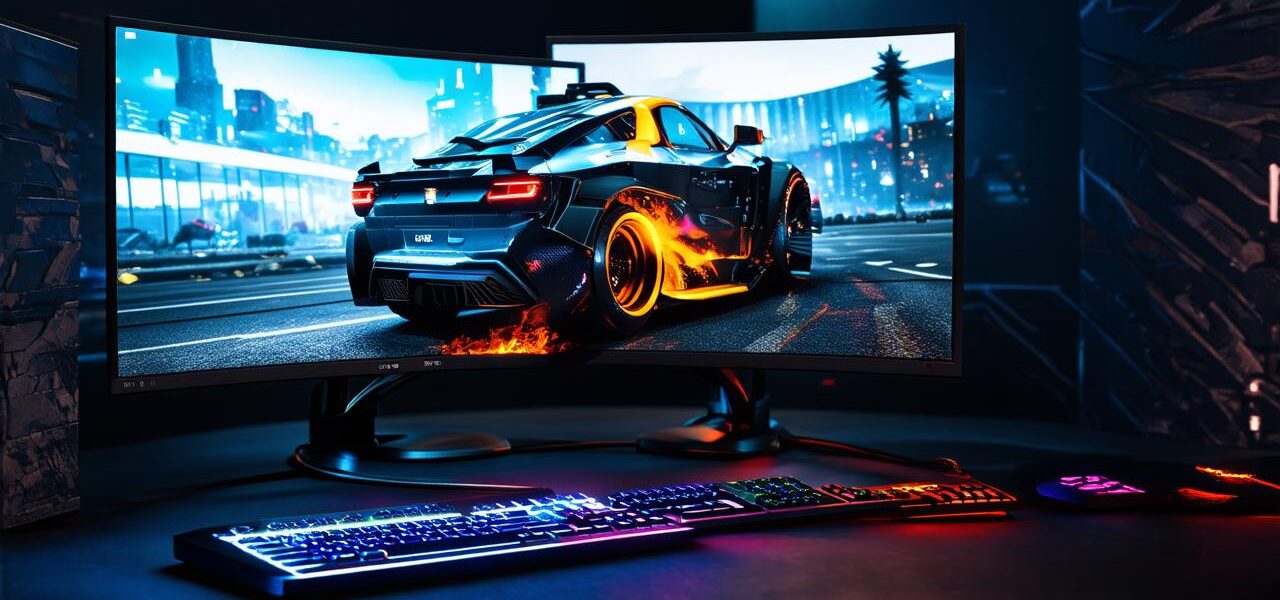As video game developers, we know how important it is to create an immersive and engaging experience for our players. One way to enhance the gaming experience is by allowing players to move their games to another monitor. In this article, we will explore the steps involved in moving a video game from one monitor to another, as well as the benefits of doing so.
1. Understanding the Benefits of Moving Video Games to Another Monitor
Moving a video game to another monitor can have numerous benefits for both developers and players. These benefits include:
- Increased immersion: By allowing players to move their games to another monitor, they can create a more immersive gaming experience. This is especially useful in games that require players to look at multiple screens simultaneously, such as flight simulators or racing games.
Improved productivity: When players are able to move their games to another monitor, they can focus on one task without being distracted by other tasks. This can lead to increased productivity and better overall gaming performance.
Enhanced collaboration: Moving a video game to another monitor can also enhance collaboration among team members. For example, if you’re working on a team project with a programmer, designer, and tester, moving the game to another monitor can allow all team members to work together more efficiently.
2. The Tools You Need to Move Video Games to Another Monitor
To move a video game from one monitor to another, you will need the following tools:
- Graphics card software: Most graphics card manufacturers provide software that allows you to manage your graphics settings and output devices. This software typically includes options for moving games between monitors.
Display drivers: To ensure that your graphics card is working properly, you will need the latest display drivers for your graphics card. These drivers are available from the manufacturer’s website.
3. The Steps to Move Video Games to Another Monitor
Step 1: Connect Your Monitors
Before you can move your game, you need to connect your monitors to your computer. This typically involves plugging in a cable from each monitor to your computer’s graphics card or motherboard.
Step 2: Configure Your Graphics Settings
Once your monitors are connected, you will need to configure your graphics settings to ensure that the game is displayed on the correct monitor. This typically involves opening the graphics card software and selecting the appropriate output device for each monitor.
Step 3: Move the Game Window
Once you have configured your graphics settings, you can move the game window from one monitor to another. To do this, simply click and drag the game window to the desired location on the other monitor.
Step 4: Test Your Setup
After you have moved the game window, it’s important to test your setup to ensure that everything is working properly. This may involve checking the resolution, refresh rate, and color depth of both monitors, as well as making sure that all audio and video inputs are configured correctly.
5. Common Issues When Moving Video Games to Another Monitor
While moving a video game from one monitor to another is generally a straightforward process, there are some common issues that you may encounter:
- Resolution or refresh rate differences: If your monitors have different resolutions or refresh rates, this can cause problems with the game’s display. To avoid these issues, make sure that both monitors are set to the same resolution and refresh rate.

Input conflicts: If you have multiple input devices connected to your computer, there is a chance that one of them may conflict with the game. This can cause issues such as incorrect mouse movement or keyboard input. To avoid this, make sure that all input devices are properly configured and that there are no conflicts between them.
Driver compatibility: If you’re using an older graphics card or driver software, it may not be compatible with newer games or operating systems. In this case, you may need to update your graphics card drivers or switch to a newer graphics card.
6. Real-Life Examples of Moving Video Games to Another Monitor
To illustrate the benefits of moving video games to another monitor, let’s look at a few real-life examples:
- Flight simulators: In flight simulators, it can be difficult to keep track of all the information on the screen. By moving the game window to another monitor, you can create a more immersive and engaging experience by displaying additional information such as altitude, heading, and airspeed on one monitor while keeping the game world on the other.
Racing games: In racing games, it’s important to be able to see your surroundings and other racers clearly. By moving the game window to another monitor, you can create a more immersive experience by displaying additional information such as lap times, speed limits, and hazards on one monitor while keeping the race world on the other.
Game development: If you’re working on a team project with a programmer, designer, and tester, moving the game window to another monitor can allow all team members to work together more efficiently. For example, the programmer could work on one monitor while the designer works on the other, allowing them to focus on different aspects of the game simultaneously.




